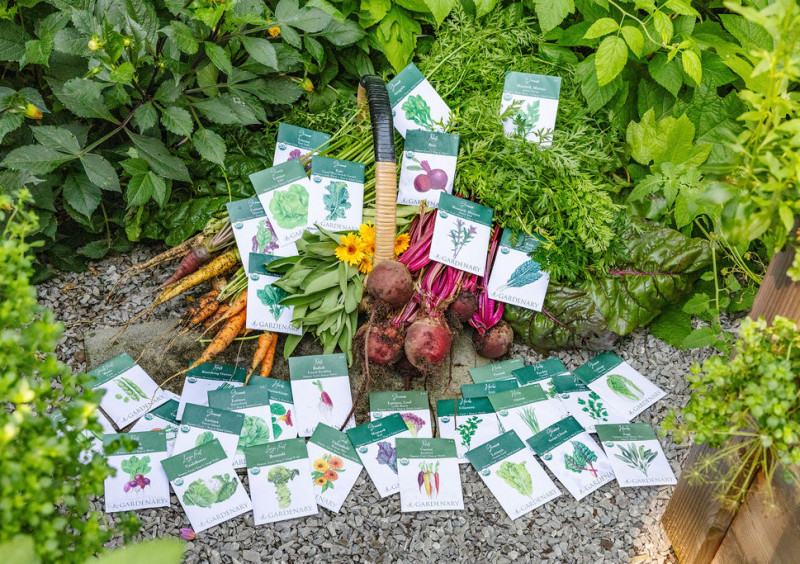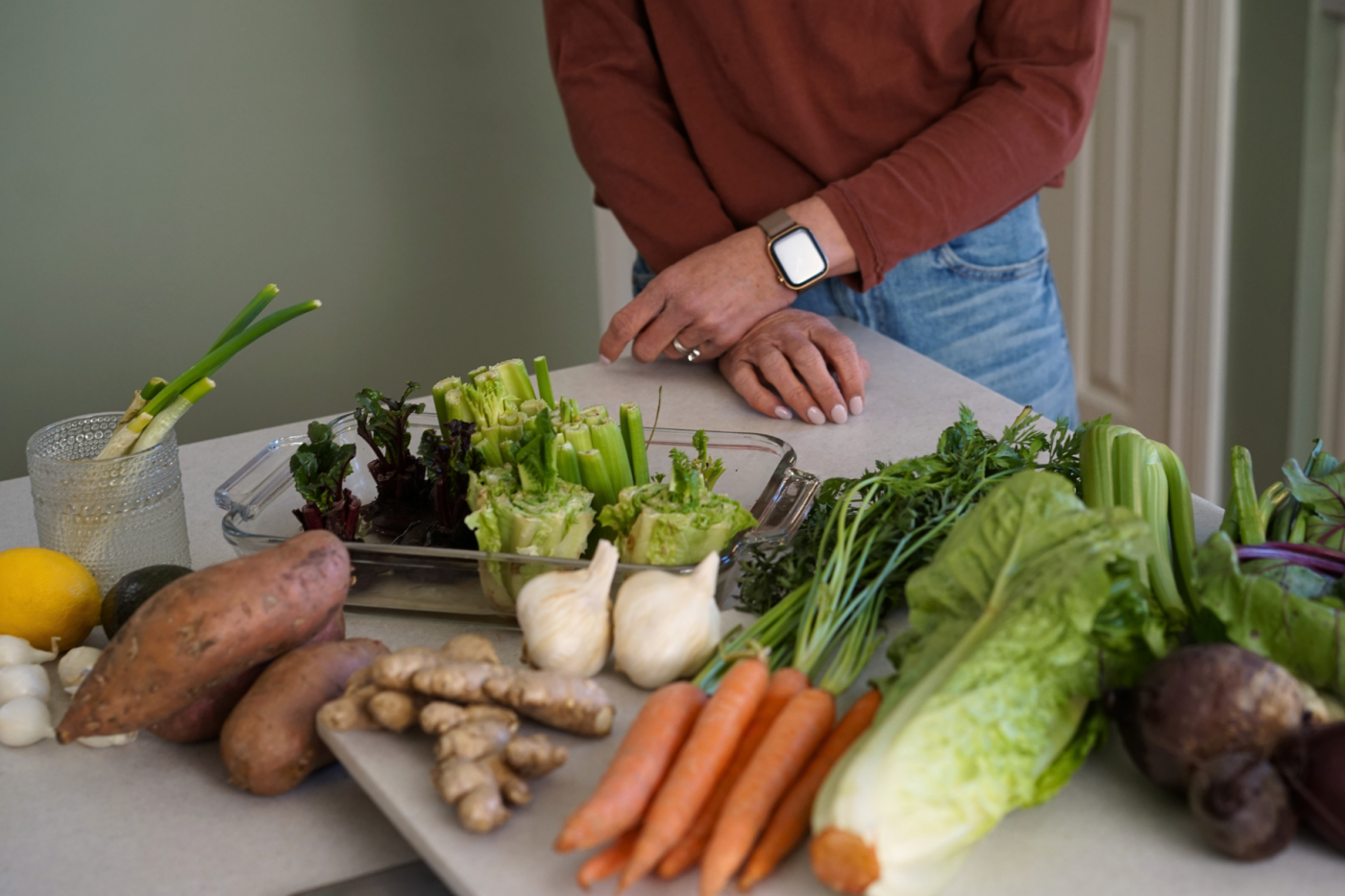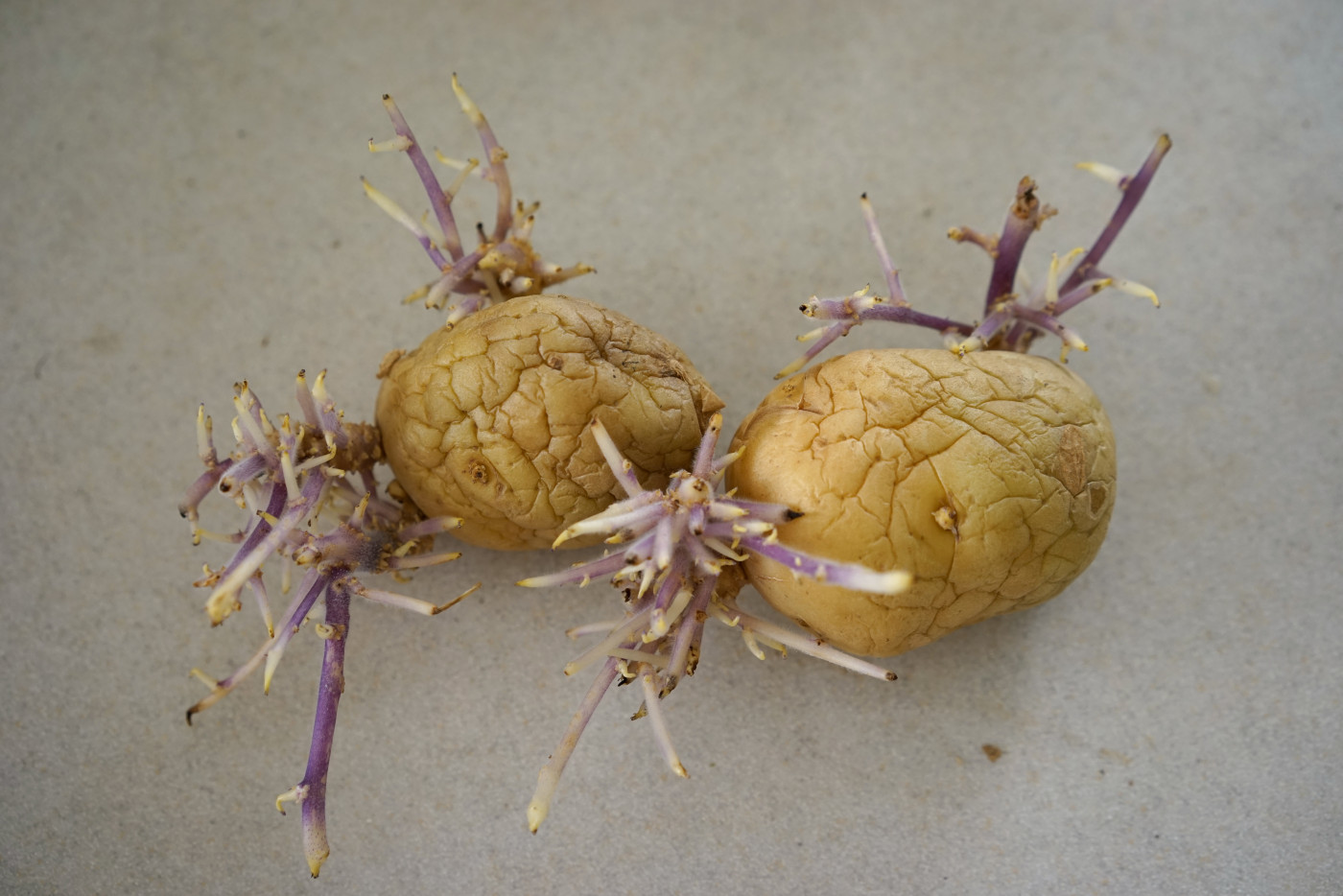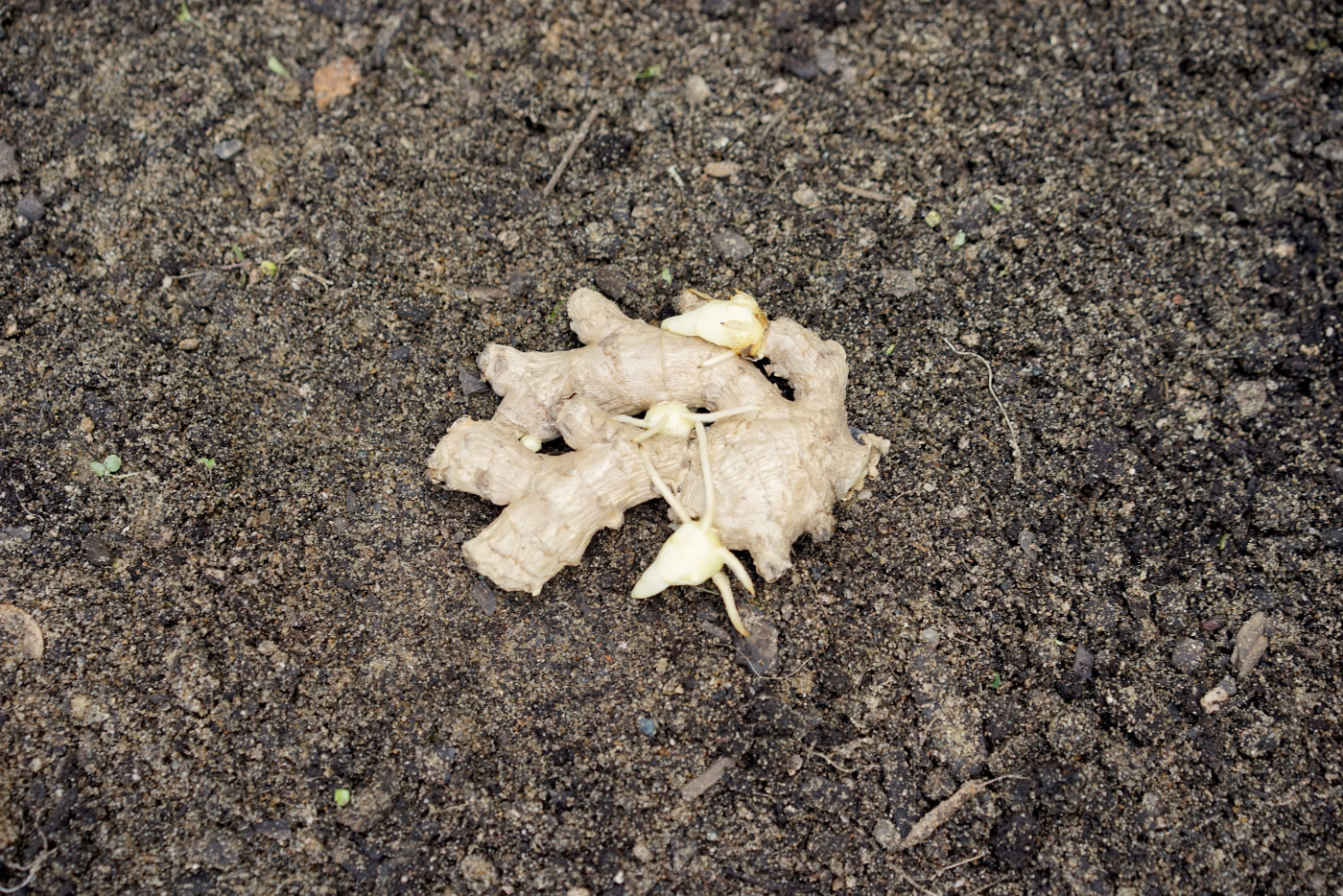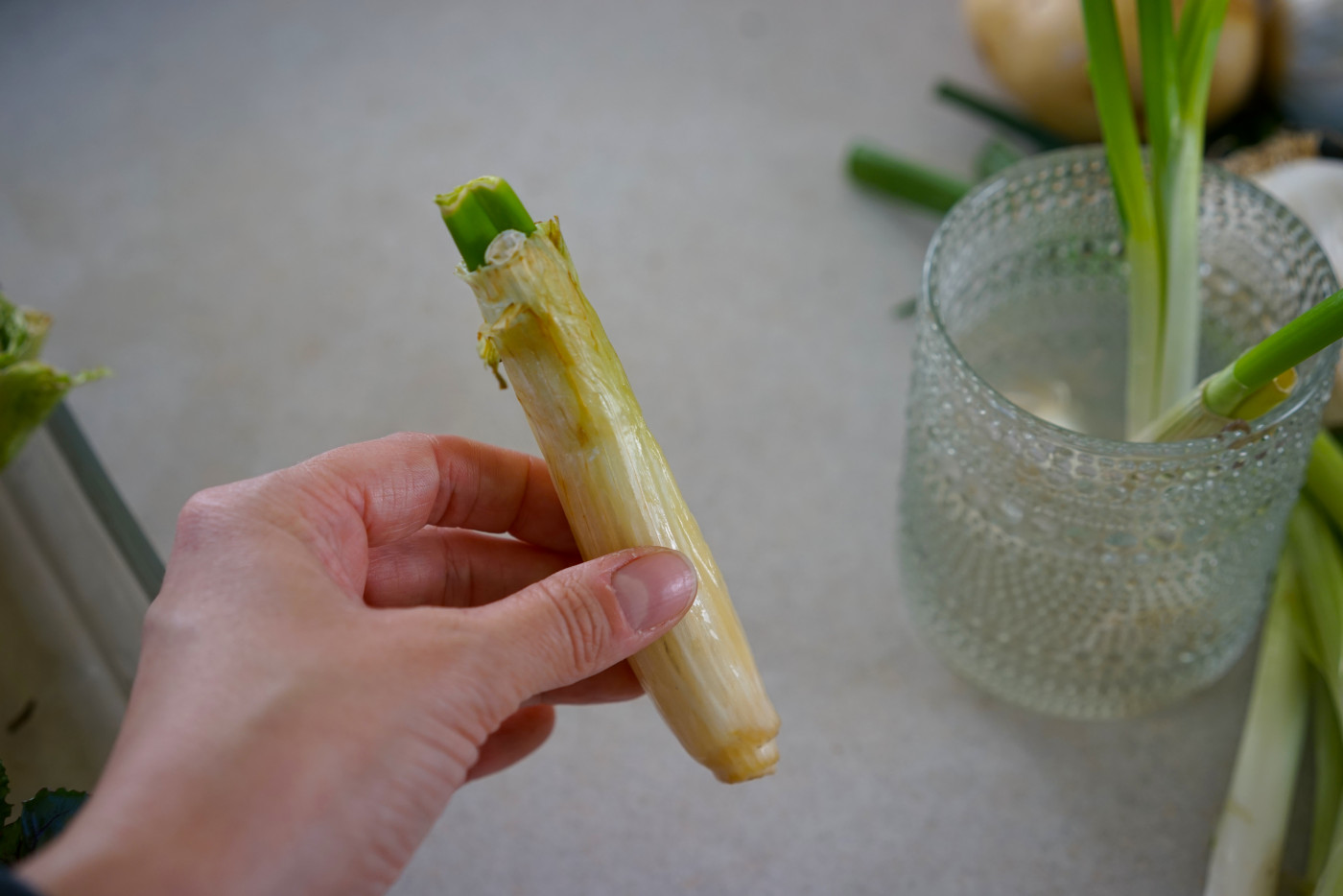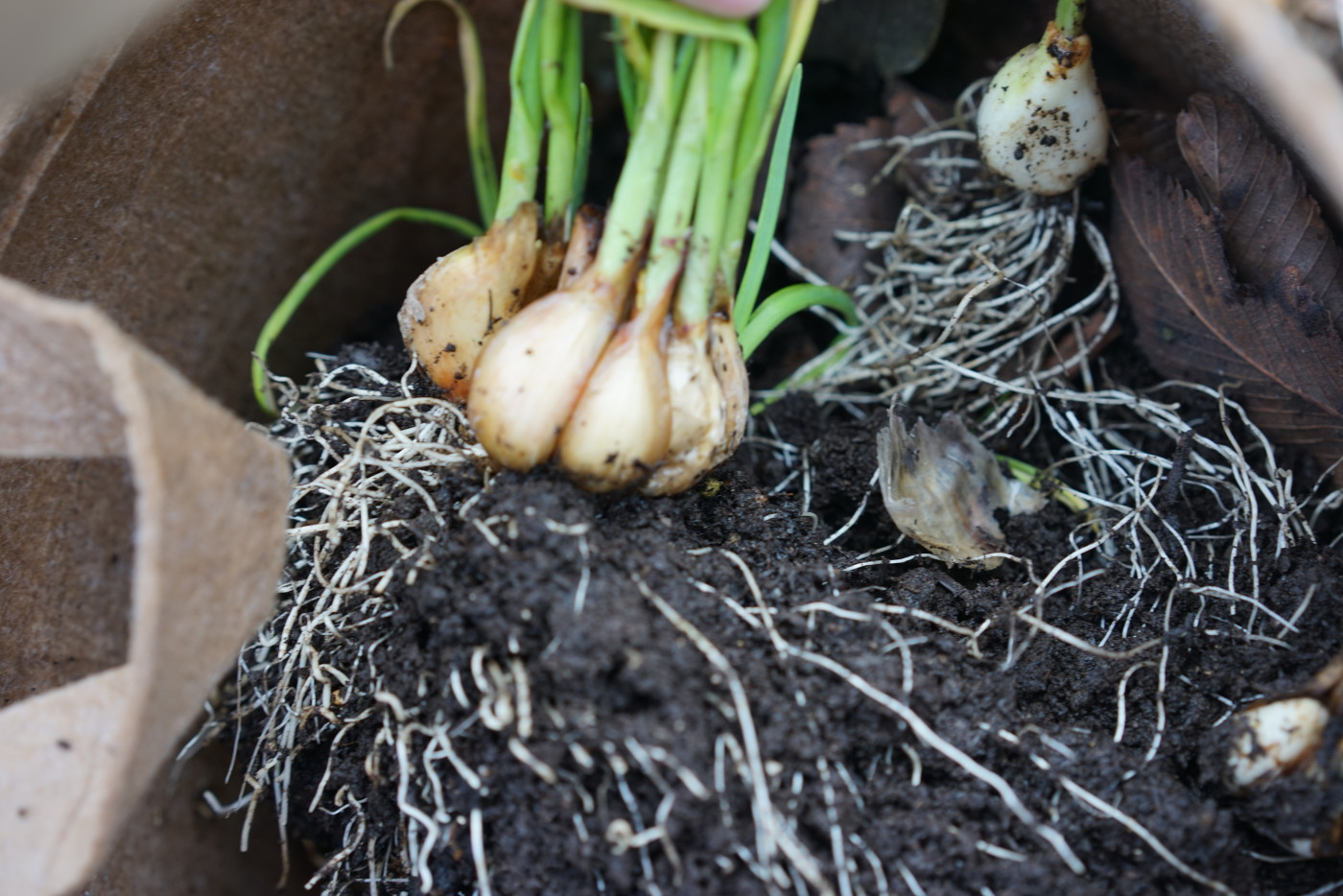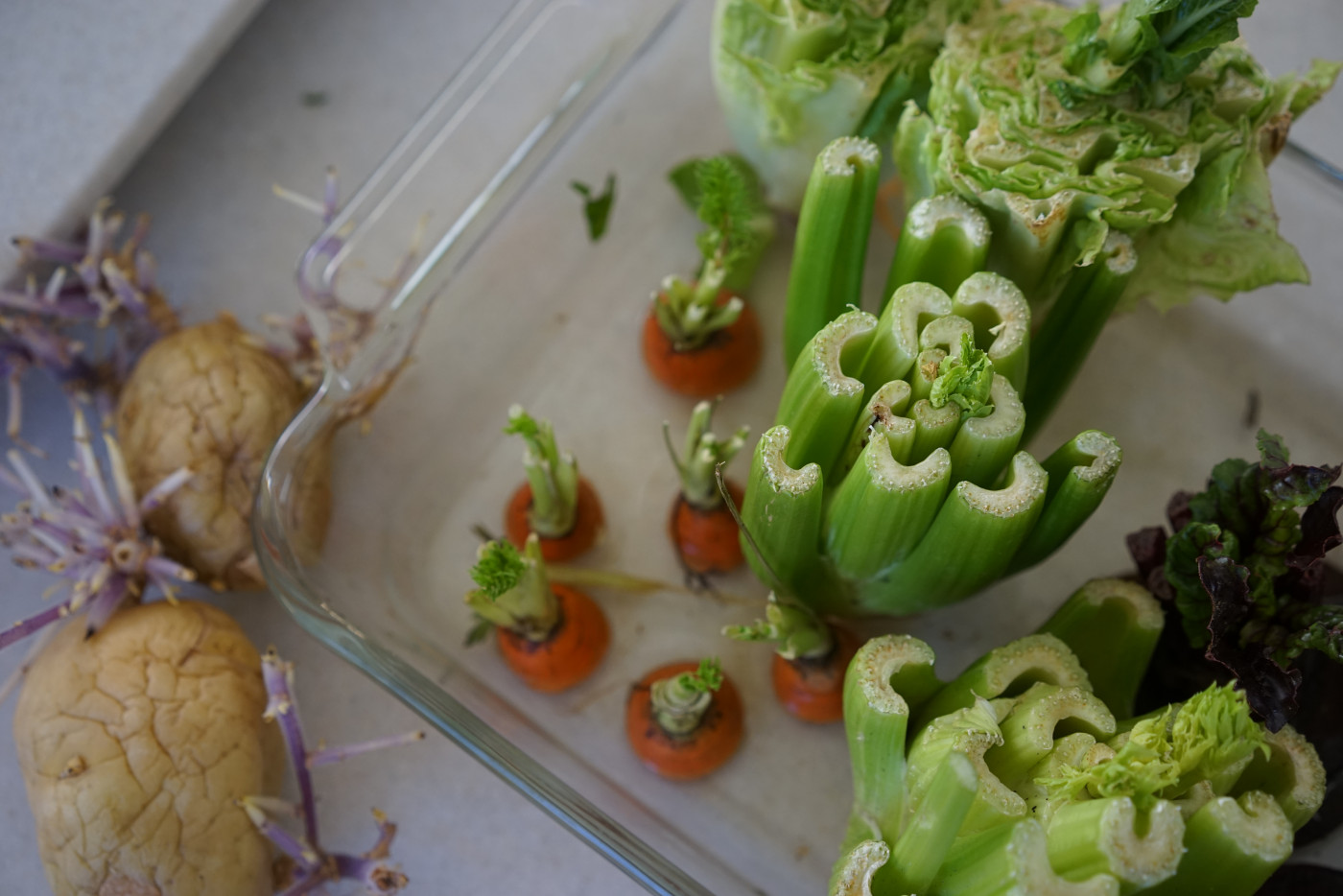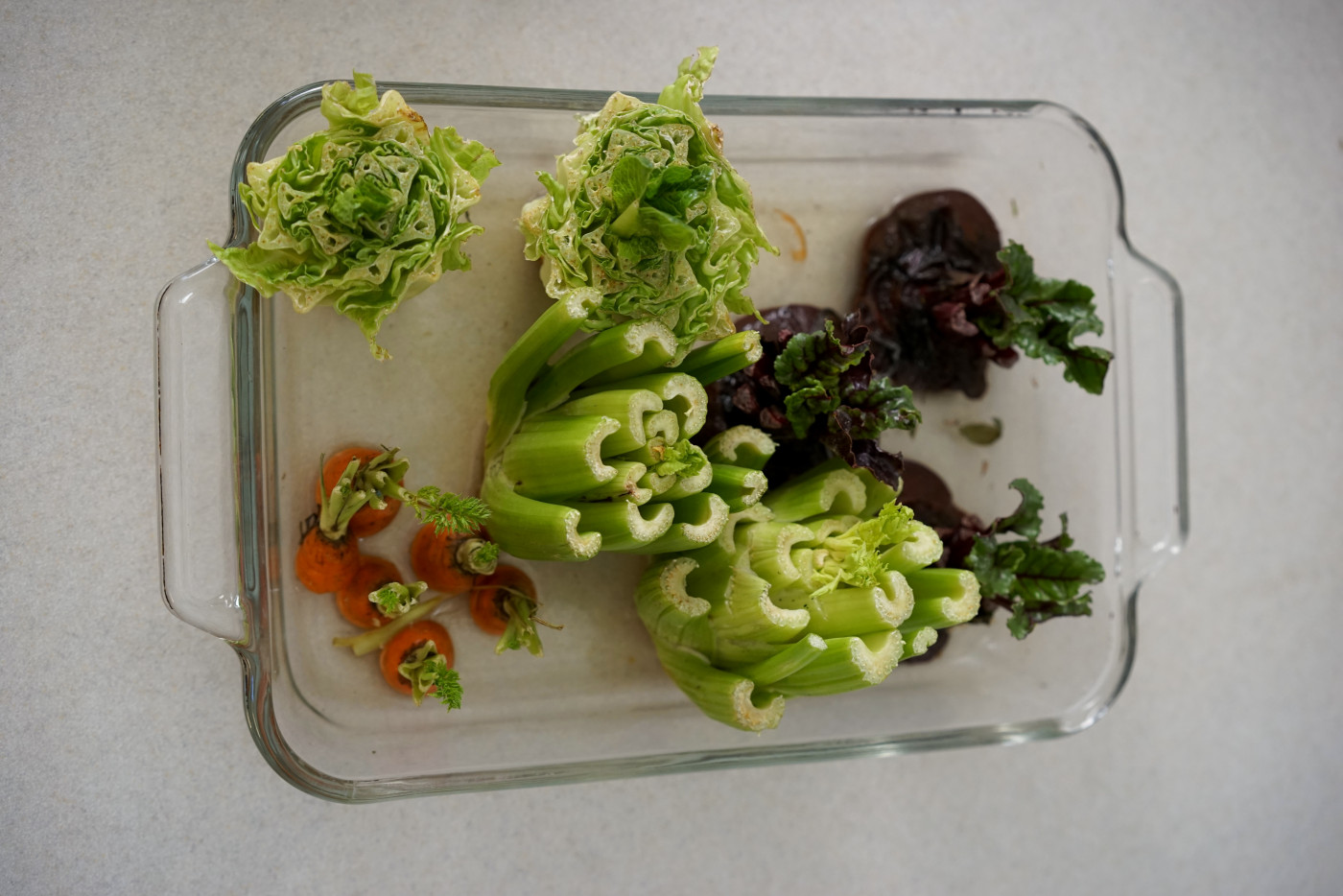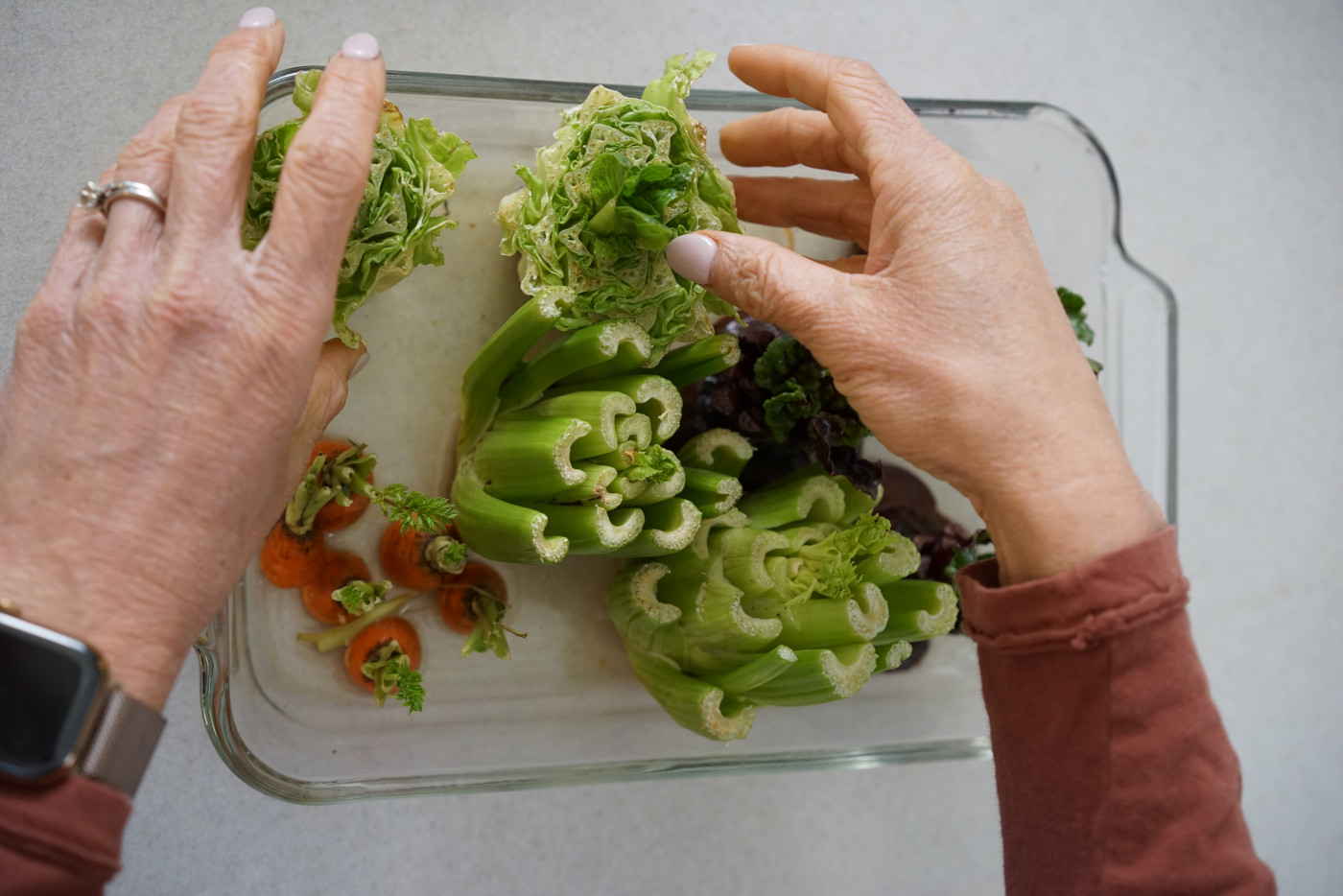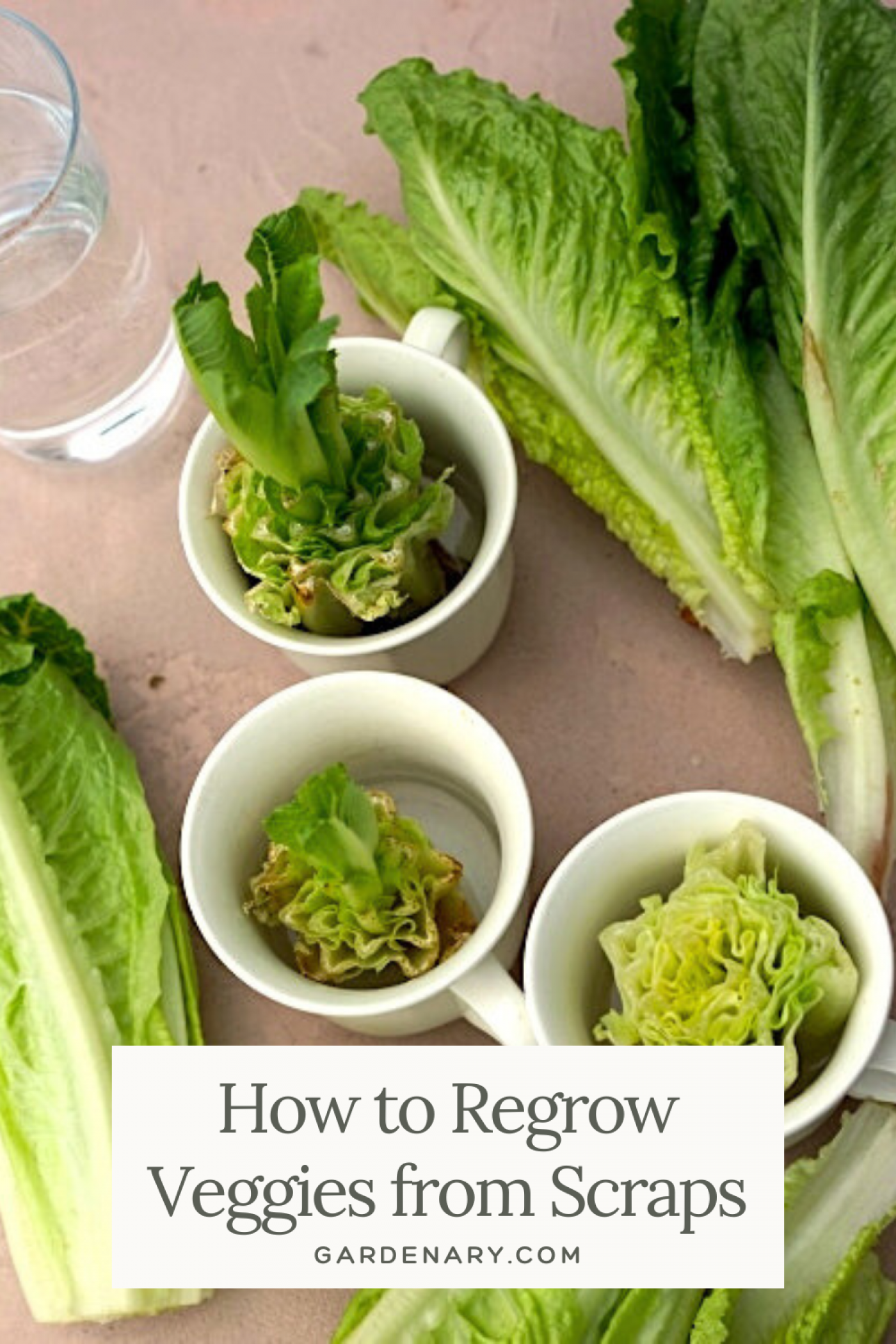Regrow Fruits and Vegetables from Table Scraps
We've all seen the viral videos. Buy one avocado and grow your own avocado tree. Never buy a carrot from the grocery store again.
The truth about growing food from your kitchen scraps is a little less exciting. Most of those videos give you an unrealistic expectation for what your little scrap can actually produce. They also show you an inaccurate time lapse that leaves you thinking you can grow your own lemons in just a couple of months. (Spoiler: You're never getting lemons from those seeds.)
Meanwhile, there are other plants that we usually toss out when they seem used up or past their prime, when in reality, they're the most worth regrowing.
So I'm going to break down the truth for you so you know which grocery store items you actually can regrow at home from the scraps—and get something worth eating—and which ones are not worth the effort.
Let's start with the vegetables that are most worth your effort and countertop space to regrow.
At a Glance
- Root crops like carrots and beets are not worth regrowing unless you're after the leafy tops, flowers, or seeds.
6 Vegetables You Can Regrow From Scraps
I've seen some people call regrowing scraps "garbage gardening." Well then, these 6 vegetables are the ultimate trash to treasure. They may not look like much, but they've got plenty of life left in them, if you give them a second chance.
Potatoes
If a potato has sprouted in your pantry, don't throw it out!
Unlike true root vegetables (carrots, beets), tubers actually regrow from pieces of themselves. Potatoes are, in my opinion, the very best vegetable to regrow from scraps. If you're looking to get a lot of food from your grocery store scraps, potatoes are the veggie for you.
Those potato sprouts are the beginning of the plant regrowing itself. Every single one of the eyes is capable of creating a new plant that will grow about 5 to 8 more potatoes!
How to Grow Potatoes from Scraps
- Cut your tuber into small sections, making sure there’s at least one eye in each section. (Leave small potatoes whole.)
- Set these sections out for one to three days to “scab” over before planting in the ground, which will prevent the tuber from rotting in the soil.
- Plant outdoors, eye facing up, once the threat of frost has passed. You can grow them in the ground or in a large container filled with well-draining soil.
In a few months, you get to dig up a whole bunch of potatoes! One hundred percent worth it!
Basil
Basil is super easy to regrow from a couple of stems you have left over after homemade pizza night. In this case, you're doing something called propagating, or encouraging the stems to grow roots and become entirely new plants.
You'll have the most success if your basil hasn't been stored in the fridge. Select the stems with the healthiest, freshest-looking leaves (no mushy parts).
How to Grow Basil from Scraps
- Cut a stem at a bit of an angle so that it's about 4 inches (10 cm) long. Remove the lower leaves from the cutting.
- Place the stem in a glass of fresh water, ensuring no leaves are submerged.
- Set the glass somewhere that gets bright but indirect light. Refresh the water every couple of days.
- After 10 to 14 days, the cutting should have new roots forming at the bottom. Once these roots are about 1 inch (2.5 cm) long, transplant the rooted cutting to a pot filled with well-draining soil.
- Water thoroughly.
→ Check out our full guide to propagating basil.


Ginger
Ginger is a rhizome, meaning the part we typically eat spreads out right underneath the soil surface. Even though I haven't seen many viral videos about it, you can actually regrow more ginger from ginger.
If you have a hand of ginger from the store, each of the fingers on that hand has little nodules that are capable of producing sprouts. These sprouts become leafy growth aboveground. Once those leaves send energy back down to the root, the plant will produce new rhizomes. So if your ginger has eyes with greenish tips, you're already on your way to homegrown ginger.
Note: You will need a heat mat to regrow this veggie scrap. Ginger is a tropical plant, so you have to trick it into thinking it's somewhere warm for it to sprout.
How to Grow Ginger from Scraps
- Chop your ginger into thumb-sized pieces, making sure each piece has an eye.
- Scoop a couple inches of well-draining soil mix into a shallow container with drainage holes.
- Place the ginger pieces on top of the soil with the eyes facing up, and push them gently into the soil. Sprinkle more soil on top of the pieces.
- Place the container on top of the heat mat.
- Mist the soil so that it's moist. Keep the soil consistently moist but not soaking while you're waiting for the eyes to sprout.
- As soon as you see little green sprouts forming from the eyes, set the container somewhere sunny.
- Once your last frost date has passed, transplant each piece into its own pot or container and move outdoors so your ginger plants can grow in the heat of summer. Move your ginger plant back indoors before cold weather returns.
You can actually keep ginger alive in containers for years. Whenever you want fresh ginger for your kitchen, just cut a little bit of the rhizome, cover it back up with soil, and leave the rest to continue growing.
Green Onions
Honestly, there's not enough hype about how easy it is to regrow green onions from the grocery store. If you've used the top part while you're cooking dinner, all you have to do is tuck the base into a glass of water, and it'll sprout more greens you can harvest. You just need a scrap with a little bit of white roots still attached at the bottom.
How to Grow Green Onions from Scraps
- Stick the white base of each green onion into a glass or jar filled with fresh water.
- After just a day or two, you'll notice new growth from the tip of each green onion.
- Change out the water every couple of days.
You can keep your green onions in water until the leaves start to lose their flavor. Alternatively, you can just stick your scraps straight into some soil in a pot or your garden, if it's warm outside. Bury each scrap so that the white part is entirely covered. Keep it watered, and you'll be able to snip so many tasty leaves.
→ Check out our full guide to regrowing green onions.
Sweet Potatoes
Sweet potatoes are tuberous roots that grow underground during the hottest part of summer. You won't be able to regrow a sweet potato on your kitchen counter, but you can use little slips from a sprouted sweet potato from the grocery store to start an entirely new sweet potato plant in the garden.
If you're not interested in growing the full plants, you can also just grow sweet potato greens, which are edible and can be cooked similar to collard greens.
How to Grow Sweet Potatoes from Scraps
- Stick toothpicks through a sweet potato and suspend the bottom portion (the tip that's more tapered, less rounded) in a jar of water.
- Keep your jar somewhere warm with bright but indirect light.
- Over the next couple of weeks, roots will form from the bottom part, and sprouts will emerge from the top. Refresh the water in the jar every couple of days.
- Remove sprouts, called slips, from the sweet potato by cutting them at the base when they're about 5 to 6 inches (13 to 15 cm) long.
- Once all threat of frost has passed, plant the slips out in your garden.
Gardenary's Warm Season Garden Planner
This beautifully designed planner takes the guesswork out of gardening and helps you stay organized, inspired, and on track during the warmer months.
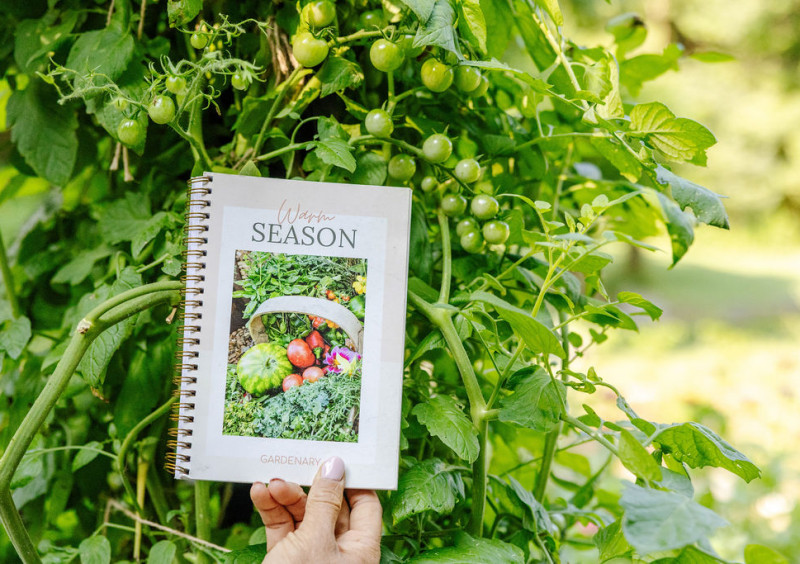
Garlic
Save one to two cloves from every garlic bulb you use in your kitchen, and you can grow your very own garlic plants. This works best with organic garlic from the store or farmers' market. If your garlic has already sprouted in your pantry, then all the better.
You have two options. You can simply submerge each clove in a little bit of water and grow what's called garlic greens, very similar to how you'd grow green onions. These greens will give you that nice garlic flavor, even if they're just growing right next to your kitchen sink.
The other option is to plant the cloves in the fall, before frost arrives. You can grow garlic in a pot or raised bed.
How to Grow Garlic from Scraps
- Dig a small hole about 4 inches (10 cm) deep.
- Place the clove, tapered end pointing up, into the hole and cover it up with soil.
- Water well.
In about 6 to 9 months, that little clove will have turned into an entire new bulb of garlic.
Veggie Scraps That Are NOT Worth Regrowing
Let my start by saying that even though I don't consider these veggies worth regrowing when it comes to the food they'll produce, they can make fun experiments, especially if you have little kids. Just keep in mind that you'll still need to buy them from the grocery store or—even better—learn to grow them from seed or plant in your garden.
Romaine Lettuce
"Buy one head of lettuce, and you'll never have to buy lettuce again!" they claim.
Leafy vegetables like romaine are super easy to regrow from scraps. The new plant parts, however, will be a far cry from the original.
Lettuce plants produce new leaves from the center of the plant. So if you stick the base of your romaine heart in water, it will send up new leaves. I have to say, these leaves are some of the most bitter I've ever tasted. Also, those older, outer leaves will never regrow, so you're never going to get the same beautiful head of lettuce you brought home from the store. Your plant will likely go to seed quickly. You can at least save the seeds.
So yes, you can grow more lettuce from the base of the romaine, but it's not really worth your effort or kitchen countertop space to wait a few weeks to regrow some bitter lettuce.
(Jump to the steps to regrow leafy vegetables like romaine.)


Celery
Like romaine, celery regrows from the heart. The celery you buy from the store is usually a bunch of stalks with the leaves removed, but you may find some little leaves in the very center. If you cut off all the stalks and stick the base in some water, new leaves will form in the middle as the plant gets ready to photosynthesize.
None of these stalks will regrow. The only new stalks you'll get will push up from the center, and they'll never be quite as crisp or tasty as the ones you buy from the store. For the most part, regrowing celery is not worth it.
Carrots
I've seen viral videos where people claim to stick a carrot stub in some water and regrow a carrot. I hate to tell you, but that carrot scrap will never be a whole carrot again.
Root crops, as I'm sure you know, grow the main part we want to eat underground. They also send up a lot of leafy growth above the soil line. It's this leafy growth that you can regrow, not the root. This is true for carrots, beets, turnips, and parsnips.
So yes, you can regrow carrot tops from kitchen scraps. Unfortunately, it's not possible to regrow the tap root, the orange part you typically eat. If you want more sticks, you'll have to grow some from seed or go back to the grocery store and buy some more.
Regrowing carrot tops isn't worth it, in my opinion, but you can actually eat the greens your little scrap produces. Carrot greens are super nutritious and can be used in salads, soups, pesto, and chimichurri.
If you keep this carrot plant alive long enough, it will produce pretty little flowers that attract tons of beneficial insects like lacewings and hoverflies. So if you have a garden, it may be worth regrowing some carrots so you'll have these flowers benefiting your space. You can also get carrot seeds to plant in your garden next year.
Beets
Just like with carrots, you'll never grow a new beetroot from a scrap. You can, however, grow some beet greens, which are edible and filled with nutrients. You can toss these leaves in salads, sautés, and smoothies to get a little vitamin and mineral boost. But overall, regrowing beets is not worth it.
If you want to grow a lot of beets, save yourself time and energy and just plant some beet seeds.
Fruit Trees
Probably the most captivating "garden hack" videos are the ones that show someone growing fruit like lemons, mangoes, avocados, apples, and kiwis from seeds saved from grocery store produce.
It's true that you can harvest these seeds and grow little plants. But here's the thing: It will take years before those plants reach a decent size and actually produce fruit. An apple tree, for instance, could take up to 30 years, and that's if it ever produces fruit at all. Another thing: Any fruit you do eventually get won't necessarily taste like the parent.
Commercial growers start with grafted plants (essentially clones of the mature trees), not with seeds. Not only is it much faster, but it also helps with consistency. Unfortunately, fruit grown from seeds may not exhibit the same characteristics as the fruit that you harvested the seeds from.
That being said, sprouting a little mango or avocado plant from the pit can be pretty fun. If you live in a warmer climate, you may even be able to grow these plants outdoors. But if you get frost, you'll need to keep them indoors as houseplants. And it probably goes without saying, but you're still gonna need to buy your avocados from the store.
Gardenary's Fall Garden Guide
Spring gets all the attention, but fall is actually the ideal time to start your kitchen garden. Get expert guidance, done-for-you layouts, and step-by-step tips to help you plant smarter, grow healthier crops, and harvest more—right through fall.
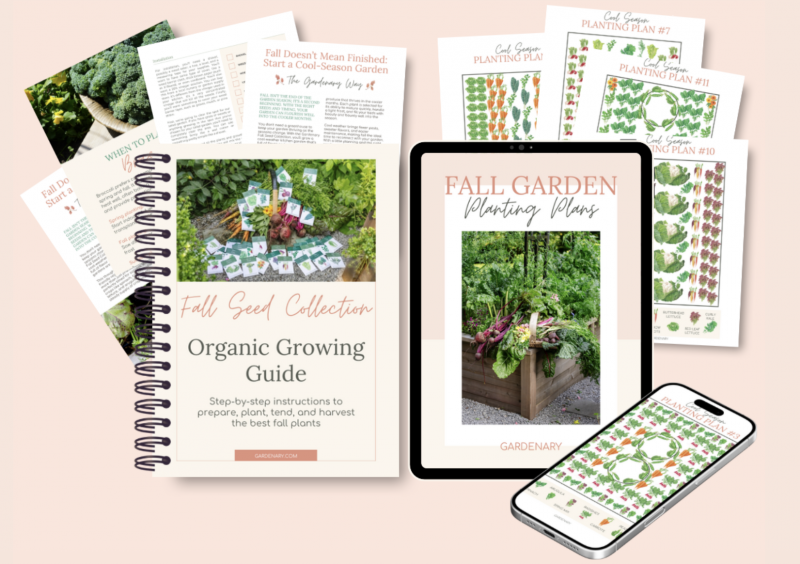
How to Regrow Leafy Vegetables from Scraps
To regrow something like romaine, celery, or bok choy, you'll need about 2 to 3 inches (5 cm) left of the base. Here are the steps to grow new leaves and roots:
- Fill a shallow bowl or saucer with about 1/2 inch of water, just enough to cover the base of the plant.
- Place the white veggie base in the water so that the stalks/leaves stay dry. Set the bowl in a windowsill or under grow lights. Change the water every 2 to 3 days.
- Once there are new roots growing from the base and new leaves coming from the top, plant in soil with the leaves/stems above the surface. These plants prefer cooler weather, so only move them outside in the spring once your nighttime temps stay above 50°F (10°C).


How to Regrow Root Crops from Scraps
To regrow carrot and beet greens, you'll need about 1 inch of the root top. Follow these steps:
- If your root has any greens still attached, pinch off most of them, keeping only the center ones. Cut the greens so that they're 1 inch (2.5 cm) long.
- Place the stump, cut side down, in a shallow bowl filled with fresh water, but don't submerge it. Set in a windowsill or under grow lights. Change the water in the bowl every 2 to 3 days.
- Transplant your root stump to a raised bed or container once you see a good amount of roots forming from the bottom.
You can collect seeds from carrots but not beets. If the carrot was a hybrid, the seeds won't produce carrots true to the original.


Tips for Regrowing Vegetable Scraps
Here are some tips I've picked up from trying to regrow all sorts of kitchen scraps over the years:
- You'll get better results if you start with organic produce from the store or farmers' market. Non-organic produce has usually been treated with chemicals to prevent sprouting.
- Most scraps only need about 1 inch (2.5 cm) of water to regrow their roots.
- Change the water every couple of days so that your scraps stay fresh.
- Set your scraps somewhere they receive bright but indirect sunshine. You also don't want them near a heat source.
- Not everything will regrow. If you've waited 10 days and see no sign of life, dump the scrap and start over.
- Don't expect some of your regrown veggies to taste the same. Most veggies will have a milder flavor, and regrown leafy greens could be downright bitter.
- Your climate will determine whether some of these plants you've started from scraps can ever be transferred to an outdoor vegetable garden.
- Don't worry if the bottom of your scrap feels a little slimy.
- If you need a quick win, start with green onions.
FAQs
What vegetable scraps can you regrow?
Many vegetables can be regrown from kitchen scraps, though you won't always get what you started with. Scraps of root crops like carrots and beets, for instance, can only be grown for their leafy tops. Lettuce plants can regrow leaves from their base, but these leaves are often bitter and won't form another full head. Other things that can be regrown include green onions, celery, garlic, potatoes, and sweet potatoes. Herbs like basil and cilantro also readily regrow from stem cuttings.
What vegetables can you put in water to regrow?
You can grow new leaves by putting carrot, beet, celery, romaine, and green onion stumps in fresh water. You can also encourage the stems of herbs to grow new roots by placing them in water. If placed in water, sweet potatoes will form new sprouts, called slips, that you can plant in your garden.
Can I grow vegetables from store-bought vegetables?
If you want actual whole vegetables from store-bought scraps, you'll do best to stick with tubers like potatoes and sweet potatoes and then bulbs like garlic and green onions. In the case of potatoes, sweet potatoes, and garlic, these plants are typically grown from plant parts anyways, not seeds.
As you can probably tell, you're not really going to be saving money on your grocery bills by regrowing these scraps in your kitchen windowsill (unless you were buying a lot of green onions.) You'll produce a couple of tasty things to add to your meals and maybe a basket of potatoes if you have the garden space (and the time to grow new potato plants).
To me, regrowing scraps is more about experimenting, learning something new about a plant's lifecycle, and maybe reducing my kitchen waste. I also loved to get my kids involved when they were little. If it's winter and there's nothing growing outside, regrowing a couple scraps is also a quick and easy way to add some green to your indoor space.
If you know someone who's been duped by a viral video claiming to grow lemons from one seed indoors, make sure to share this article with them so they won't waste their time trying to grow carrot roots in their kitchen.
Go in with reasonable expectations for what you might get from your scrap and have fun with it!
Gardenary's Fall Seed Collection
Get 34 Organic Fall Garden Seeds—Plus Planting Plans & 300 Pages of Growing Guides to Harvest More This Season!
